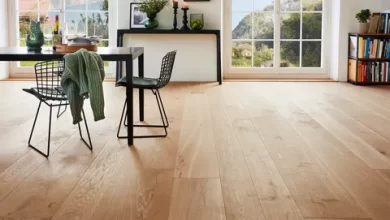What to Expect During a Roof Inspection by a Roofing Contractor
Essential Insights and Key Steps for Homeowners
A roof inspection is a crucial part of home maintenance that ensures the longevity and safety of your property. Conducted by a professional roofing contractor, a thorough roof inspection can help identify potential problems before they escalate into costly repairs. In this detailed guide, we will walk you through the entire process of a roof inspection, what to expect from a roofing contractor, and why it is essential for the upkeep of your home.
Introduction
Importance of Regular Roof Inspections
A roof is one of the most critical components of a house, providing protection against the elements and contributing to the overall structural integrity of the building. Regular roof inspections are vital for several reasons:
- Early Detection of Issues: Identifying problems early can prevent minor issues from becoming major repairs.
- Prolonging Roof Life: Regular maintenance can extend the lifespan of your roof.
- Ensuring Safety: A well-maintained roof ensures the safety of the inhabitants by preventing leaks and structural failures.
- Insurance and Warranty Compliance: Many insurance policies and roof warranties require regular inspections.
When Should You Schedule a Roof Inspection?
There are several key times when scheduling a roof inspection is advisable:
- After Severe Weather: Post-storm inspections can identify damage from hail, wind, or heavy rain.
- Before Buying or Selling a Home: A roof inspection can provide peace of mind and uncover potential issues.
- Routine Maintenance: Ideally, homeowners should schedule inspections twice a year, in the spring and fall.
- Visible Damage: If you notice any signs of damage or leaks, an immediate inspection is warranted.
Preparing for a Roof Inspection
Choosing the Right Roofing Contractor
Selecting a reputable and experienced roofing contractor is crucial for a thorough inspection. Here are some tips:
- Check Credentials: Ensure the contractor is licensed, insured, and certified.
- Read Reviews: Look for online reviews and testimonials from previous clients.
- Ask for References: A reliable contractor should provide references upon request.
- Get Multiple Quotes: Compare services and prices from different contractors.
What to Discuss with Your Contractor
Before the inspection, have a detailed conversation with your roofing contractor. Topics to cover include:
- Scope of Inspection: Understand what areas and aspects of the roof will be inspected.
- Inspection Report: Ask about the format and content of the inspection report.
- Cost: Clarify the cost of the inspection and any potential additional charges.
- Timeline: Discuss how long the inspection will take and when you can expect the report.
The Roof Inspection Process
Exterior Roof Inspection
The exterior inspection involves assessing the roof’s surface and structure from the outside. Key components include:
Visual Examination
- Roof Covering: Checking for missing, broken, or damaged shingles, tiles, or other roofing materials.
- Flashings: Inspecting flashings around chimneys, vents, and skylights for signs of wear or damage.
- Gutters and Downspouts: Ensuring gutters are clear of debris and properly attached, and downspouts are directing water away from the foundation.
- Soffit and Fascia: Examining these elements for signs of rot, damage, or pest infestation.
Roof Structure
- Sagging or Uneven Areas: Identifying any areas that appear sagging or uneven, which could indicate underlying structural issues.
- Roof Penetrations: Checking the condition of roof penetrations such as chimneys, vents, and skylights for leaks or damage.
Safety Considerations
- Fall Protection: Ensuring the inspector uses proper fall protection equipment.
- Access Issues: Discussing how the inspector will safely access the roof, especially if the roof is steep or high.
Interior Roof Inspection
The interior inspection focuses on the attic and ceiling areas, looking for signs of leaks and structural damage.
Attic Examination
- Insulation: Checking the condition and coverage of insulation, which can affect energy efficiency and prevent ice dams.
- Ventilation: Ensuring proper ventilation to prevent moisture buildup and prolong the roof’s lifespan.
- Signs of Water Damage: Looking for water stains, mold, or mildew that indicate leaks.
Ceiling Inspection
- Water Stains: Identifying any discoloration or stains on the ceiling, which may indicate a roof leak.
- Structural Integrity: Assessing the ceiling for signs of sagging or structural issues.
Common Issues Identified During a Roof Inspection
Shingle Damage
- Cracked or Broken Shingles: Can lead to leaks and water damage.
- Granule Loss: Indicates the shingles are aging and may need replacement.
- Curling or Buckling: Often caused by poor installation or ventilation issues.
Flashing Failures
- Corroded or Missing Flashing: Can lead to leaks around roof penetrations.
- Improper Installation: Poorly installed flashing can cause water infiltration.
Gutter Problems
- Clogged Gutters: Can cause water to overflow and damage the roof and siding.
- Detached Gutters: Can lead to improper water drainage and foundation issues.
Ventilation Issues
- Inadequate Ventilation: Can cause moisture buildup and ice dams.
- Blocked Vents: Reduces airflow and can lead to overheating and roof damage.
Structural Concerns
- Sagging Roof Deck: Indicates potential structural problems.
- Rotting Wood: Can compromise the roof’s structural integrity.
Signs of Leaks
- Water Stains: On the ceiling or in the attic.
- Mold and Mildew: Indicates prolonged moisture issues.
Post-Inspection Process
Detailed Inspection Report
After the inspection, the contractor will provide a detailed report that includes:
- Findings: A summary of the issues identified during the inspection.
- Photographs: Visual evidence of the damage or concerns.
- Recommendations: Suggested repairs or replacements.
- Cost Estimates: An estimate of the repair costs.
Discussing the Report with Your Contractor
Review the report with your contractor to understand the findings and ask any questions. Discuss the following:
- Urgency of Repairs: Which issues need immediate attention and which can wait.
- Repair Options: Different solutions for addressing the problems.
- Maintenance Tips: Advice on how to prevent future issues.
Making Necessary Repairs
Prioritizing Repairs
Based on the inspection report, prioritize the repairs:
- Immediate Repairs: Issues that threaten the safety or integrity of the roof.
- Short-term Repairs: Problems that could worsen if not addressed soon.
- Long-term Repairs: Maintenance tasks that can extend the roof’s lifespan.
Hiring a Contractor for Repairs
If repairs are needed, consider the following when hiring a contractor:
- Experience and Expertise: Ensure the contractor has experience with the type of repairs needed.
- References and Reviews: Check references and online reviews.
- Warranty: Confirm if the repairs come with a warranty.
Preventive Maintenance Tips
Regular Inspections
Continue to schedule regular inspections to catch issues early.
Gutter Maintenance
Keep gutters clean and ensure they are properly attached.
Roof Cleaning
Remove debris and moss from the roof surface to prevent damage.
Tree Trimming
Trim overhanging branches to prevent damage from falling limbs.
Proper Ventilation
Ensure your attic has adequate ventilation to prevent moisture buildup.
Conclusion
Regular roof inspections by a professional roofing contractor are essential for maintaining the health and longevity of your roof. By understanding what to expect during a roof inspection, you can be better prepared to address any issues that arise and ensure your home remains safe and secure. Investing in regular inspections and timely repairs can save you money in the long run and provide peace of mind knowing your roof is in good condition.



